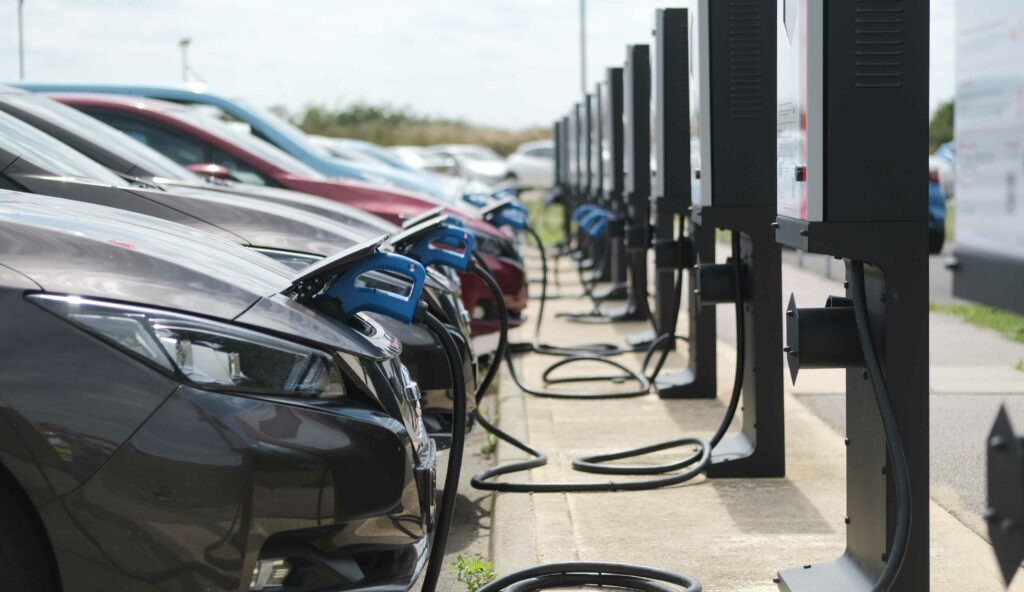The UK’s “largest” waste collection fleet operator, Veolia, has announced the completion of its “world-first” vehicle-to-grid (V2G) trial.
The first stage of the trial was completed last week (12 January) and was able to charge and discharge 110kW of energy from two specially designed bi-directional vehicles.
Veolia currently plans to electrify all of its 1,800 Refuse Collection Vehicles (RCV) by 2040, which together will be able to provide 200MW of daily flexible power capacity to the grid.
Collection vehicles are especially suitable for V2G charging, as their batteries are six times larger than the average car battery.
Moreover, the fleets are usually parked at peak energy consumption times for the National Grid, meaning they are already stationary and waiting when the grid naturally requires a boost of energy.
Veolia now plans to expand the trial, using council collection vehicles from the London borough of Westminster to pilot the second stage on real streets.
For this project Veolia partnered with electric vehicle (EV) charger manufacturer, Turbo Power Systems, vehicle repower experts Magnetic Systems Technology and EV charge point management software provider Fuuse.
Estelle Brachlianoff, CEO of Veolia, said: “By enabling EVs to become active players in the power grid, we are harnessing their potential to balance energy supply and demand, reduce carbon emissions and promote renewable energy. The success of the V2G demonstration illustrates this perfectly.”
V2G trials and tribulations
Aside from Veolia, there have been several other trials or studies dedicated to V2G growth in the UK. There was even another trial using fleets specifically in October 2022.
The NHS worked with EV charging firm Indra to introduce a fleet of electric pharmacy vehicles, which were programmed to charge during off-peak periods and then discharge energy from the vehicle batteries back into the hospitals when the NHS’s electricity demand and cost were at their highest.
The trial was able to reduce its peak hour use electricity costs by £90 a month, thanks to an average reduction of 6p/kWh, which is a saving of around £1,075 per annum.
Another area being explored is the utilisation of airport car parks, or long-stay car parks in general. UK Power Networks (UKPN) published a study in September 2023 which focused on charging EVs when demand and costs are low, as well as the potential of V2G technology to provide additional power for the grid.
The study estimated that around £1.3 billion in flexible energy savings could be made by 2050 if V2G charging was made available across the 140,000 long-stay parking spaces in the areas served by UKPN.
Octopus Energy announced that its customers had taken part in a V2G trial in September 2023 as well, using its Kraken software to allow the National Grid ESO to request for more power from the customers directly.
Despite numerous trials, however, there is little movement on a V2G takeover in the UK. This is primarily attributed to outdated grid codes and the instability of EV’s ever-evolving technology.
For example, some of the companies mentioned as contributors in the V2G trials are simultaneously working towards vehicle-to-everything (V2X) technology among different partnerships.
Alongside Kaluza, Volkswagen and OVO Energy, Indra have launched a vehicle-to-everything (V2X) bidirectional charging programme aiming to further develop business models.
The group research scheme is named INFLEXION and has received funding from the UK Government to reach their goal.
Plus, a consortium headed by Fuuse has received nearly £200,000 in grant funding from the government to support the development of vehicle-to-everything (V2X) technology.
The consortium also includes the aforementioned Turbo Power Systems (TPS), as well as Gridicity and Power Network Distribution Centre (PNDC).





